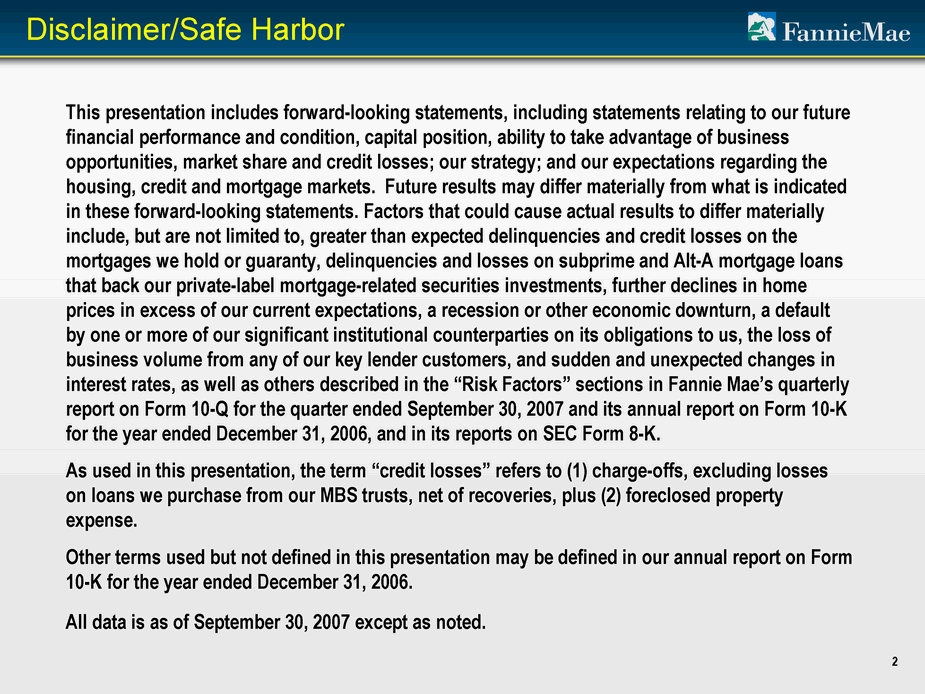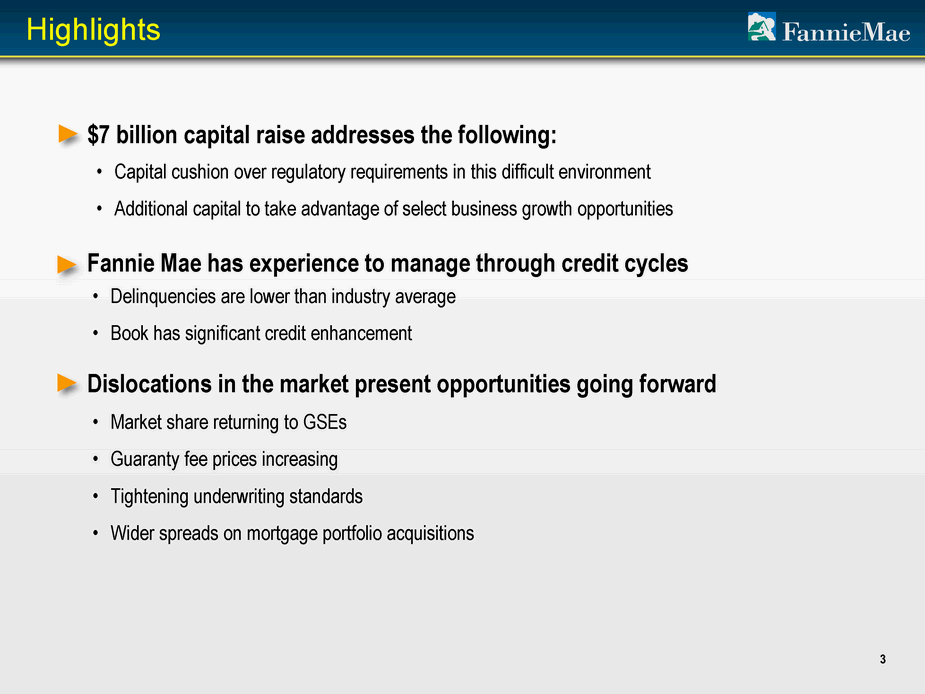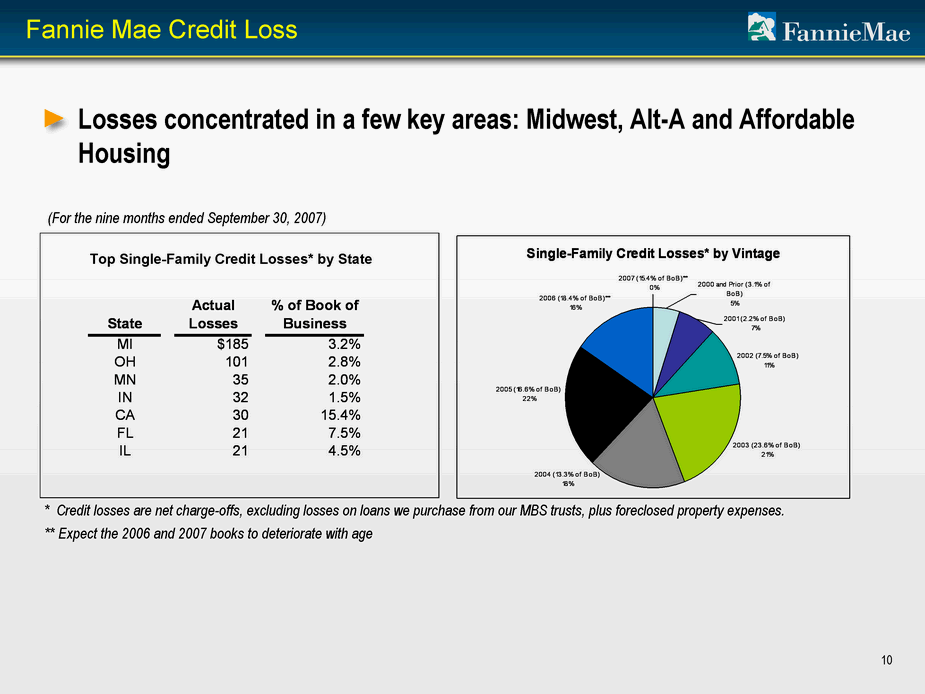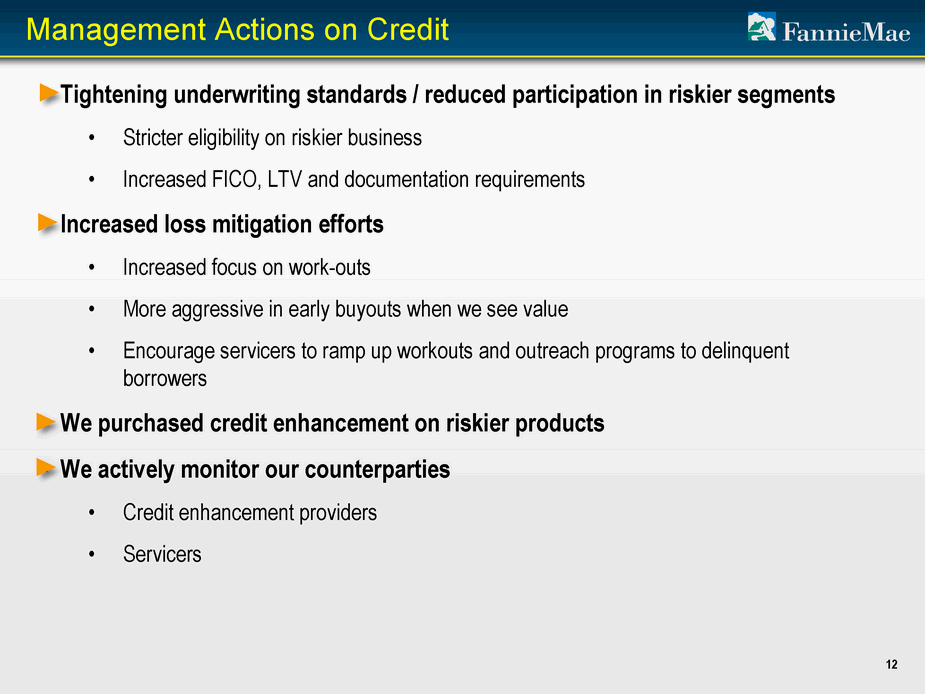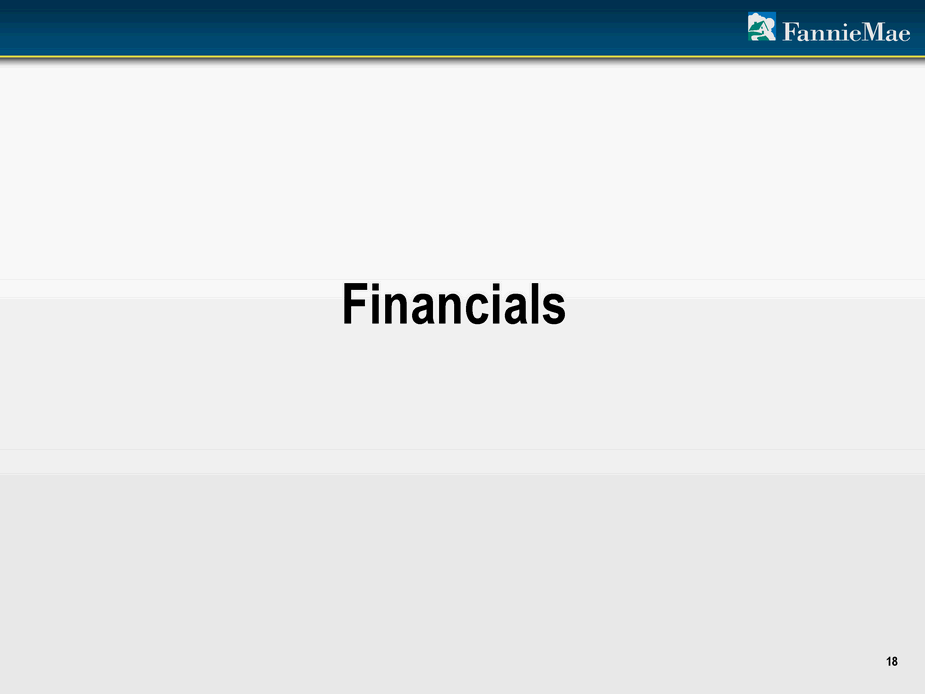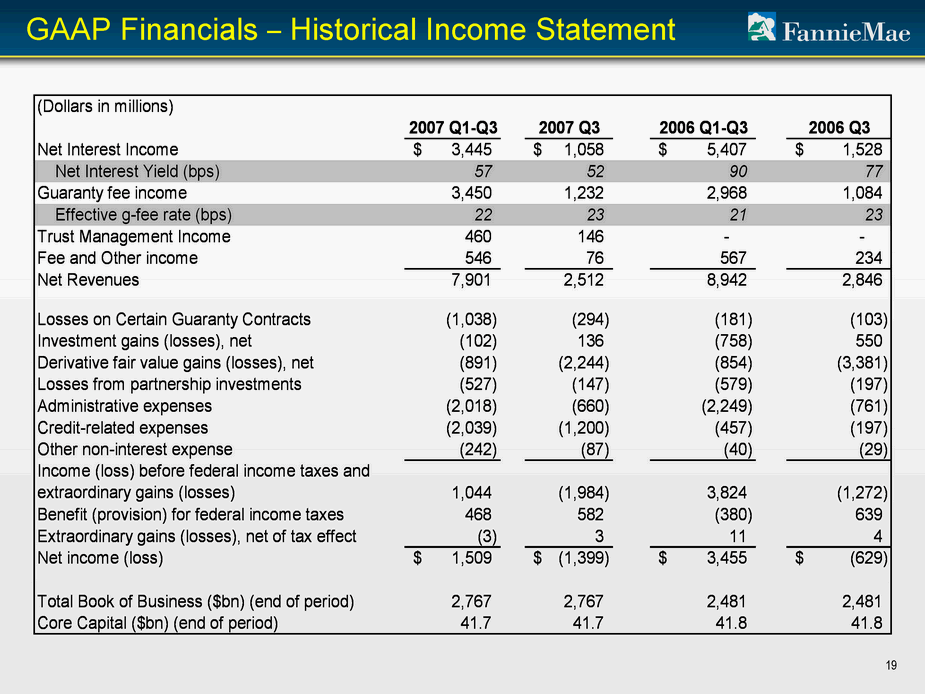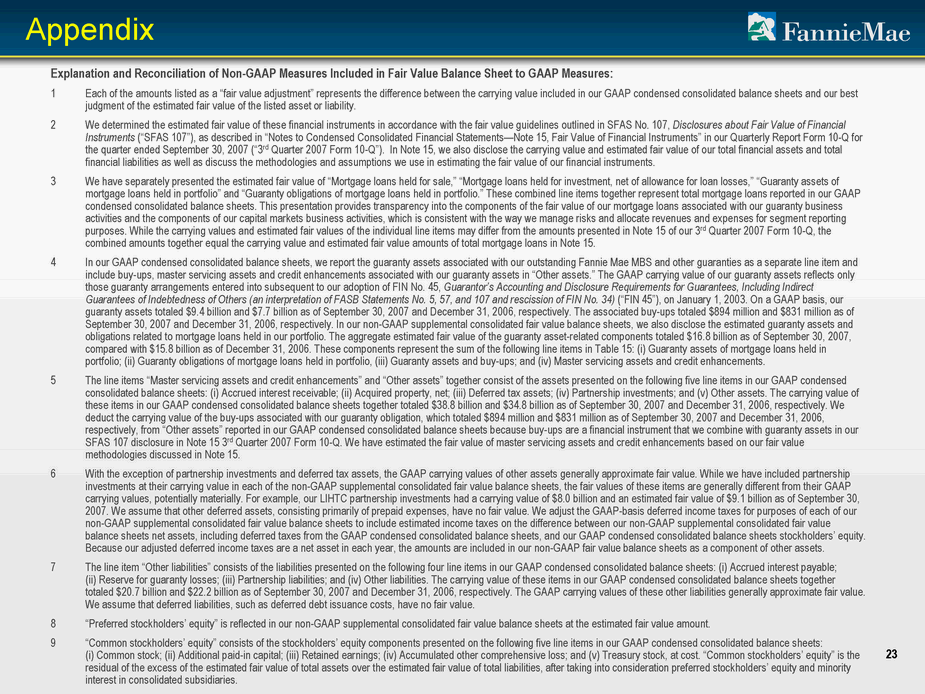| Appendix 23 Explanation and Reconciliation of Non-GAAP Measures Included in Fair Value Balance Sheet to GAAP Measures: 1 Each of the amounts listed as a "fair value adjustment" represents the difference between the carrying value included in our GAAP condensed consolidated balance sheets and our best judgment of the estimated fair value of the listed asset or liability. 2 We determined the estimated fair value of these financial instruments in accordance with the fair value guidelines outlined in SFAS No. 107, Disclosures about Fair Value of Financial Instruments ("SFAS 107"), as described in "Notes to Condensed Consolidated Financial Statements-Note 15, Fair Value of Financial Instruments" in our Quarterly Report Form 10-Q for the quarter ended September 30, 2007 ("3rd Quarter 2007 Form 10-Q"). In Note 15, we also disclose the carrying value and estimated fair value of our total financial assets and total financial liabilities as well as discuss the methodologies and assumptions we use in estimating the fair value of our financial instruments. 3 We have separately presented the estimated fair value of "Mortgage loans held for sale," "Mortgage loans held for investment, net of allowance for loan losses," "Guaranty assets of mortgage loans held in portfolio" and "Guaranty obligations of mortgage loans held in portfolio." These combined line items together represent total mortgage loans reported in our GAAP condensed consolidated balance sheets. This presentation provides transparency into the components of the fair value of our mortgage loans associated with our guaranty business activities and the components of our capital markets business activities, which is consistent with the way we manage risks and allocate revenues and expenses for segment reporting purposes. While the carrying values and estimated fair values of the individual line items may differ from the amounts presented in Note 15 of our 3rd Quarter 2007 Form 10-Q, the combined amounts together equal the carrying value and estimated fair value amounts of total mortgage loans in Note 15. 4 In our GAAP condensed consolidated balance sheets, we report the guaranty assets associated with our outstanding Fannie Mae MBS and other guaranties as a separate line item and include buy-ups, master servicing assets and credit enhancements associated with our guaranty assets in "Other assets." The GAAP carrying value of our guaranty assets reflects only those guaranty arrangements entered into subsequent to our adoption of FIN No. 45, Guarantor's Accounting and Disclosure Requirements for Guarantees, Including Indirect Guarantees of Indebtedness of Others (an interpretation of FASB Statements No. 5, 57, and 107 and rescission of FIN No. 34) ("FIN 45"), on January 1, 2003. On a GAAP basis, our guaranty assets totaled $9.4 billion and $7.7 billion as of September 30, 2007 and December 31, 2006, respectively. The associated buy-ups totaled $894 million and $831 million as of September 30, 2007 and December 31, 2006, respectively. In our non-GAAP supplemental consolidated fair value balance sheets, we also disclose the estimated guaranty assets and obligations related to mortgage loans held in our portfolio. The aggregate estimated fair value of the guaranty asset-related components totaled $16.8 billion as of September 30, 2007, compared with $15.8 billion as of December 31, 2006. These components represent the sum of the following line items in Table 15: (i) Guaranty assets of mortgage loans held in portfolio; (ii) Guaranty obligations of mortgage loans held in portfolio, (iii) Guaranty assets and buy-ups; and (iv) Master servicing assets and credit enhancements. 5 The line items "Master servicing assets and credit enhancements" and "Other assets" together consist of the assets presented on the following five line items in our GAAP condensed consolidated balance sheets: (i) Accrued interest receivable; (ii) Acquired property, net; (iii) Deferred tax assets; (iv) Partnership investments; and (v) Other assets. The carrying value of these items in our GAAP condensed consolidated balance sheets together totaled $38.8 billion and $34.8 billion as of September 30, 2007 and December 31, 2006, respectively. We deduct the carrying value of the buy-ups associated with our guaranty obligation, which totaled $894 million and $831 million as of September 30, 2007 and December 31, 2006, respectively, from "Other assets" reported in our GAAP condensed consolidated balance sheets because buy-ups are a financial instrument that we combine with guaranty assets in our SFAS 107 disclosure in Note 15 3rd Quarter 2007 Form 10-Q. We have estimated the fair value of master servicing assets and credit enhancements based on our fair value methodologies discussed in Note 15. 6 With the exception of partnership investments and deferred tax assets, the GAAP carrying values of other assets generally approximate fair value. While we have included partnership investments at their carrying value in each of the non-GAAP supplemental consolidated fair value balance sheets, the fair values of these items are generally different from their GAAP carrying values, potentially materially. For example, our LIHTC partnership investments had a carrying value of $8.0 billion and an estimated fair value of $9.1 billion as of September 30, 2007. We assume that other deferred assets, consisting primarily of prepaid expenses, have no fair value. We adjust the GAAP-basis deferred income taxes for purposes of each of our non-GAAP supplemental consolidated fair value balance sheets to include estimated income taxes on the difference between our non-GAAP supplemental consolidated fair value balance sheets net assets, including deferred taxes from the GAAP condensed consolidated balance sheets, and our GAAP condensed consolidated balance sheets stockholders' equity. Because our adjusted deferred income taxes are a net asset in each year, the amounts are included in our non-GAAP fair value balance sheets as a component of other assets. 7 The line item "Other liabilities" consists of the liabilities presented on the following four line items in our GAAP condensed consolidated balance sheets: (i) Accrued interest payable; (ii) Reserve for guaranty losses; (iii) Partnership liabilities; and (iv) Other liabilities. The carrying value of these items in our GAAP condensed consolidated balance sheets together totaled $20.7 billion and $22.2 billion as of September 30, 2007 and December 31, 2006, respectively. The GAAP carrying values of these other liabilities generally approximate fair value. We assume that deferred liabilities, such as deferred debt issuance costs, have no fair value. 8 "Preferred stockholders' equity" is reflected in our non-GAAP supplemental consolidated fair value balance sheets at the estimated fair value amount. 9 "Common stockholders' equity" consists of the stockholders' equity components presented on the following five line items in our GAAP condensed consolidated balance sheets: (i) Common stock; (ii) Additional paid-in capital; (iii) Retained earnings; (iv) Accumulated other comprehensive loss; and (v) Treasury stock, at cost. "Common stockholders' equity" is the residual of the excess of the estimated fair value of total assets over the estimated fair value of total liabilities, after taking into consideration preferred stockholders' equity and minority interest in consolidated subsidiaries. |

